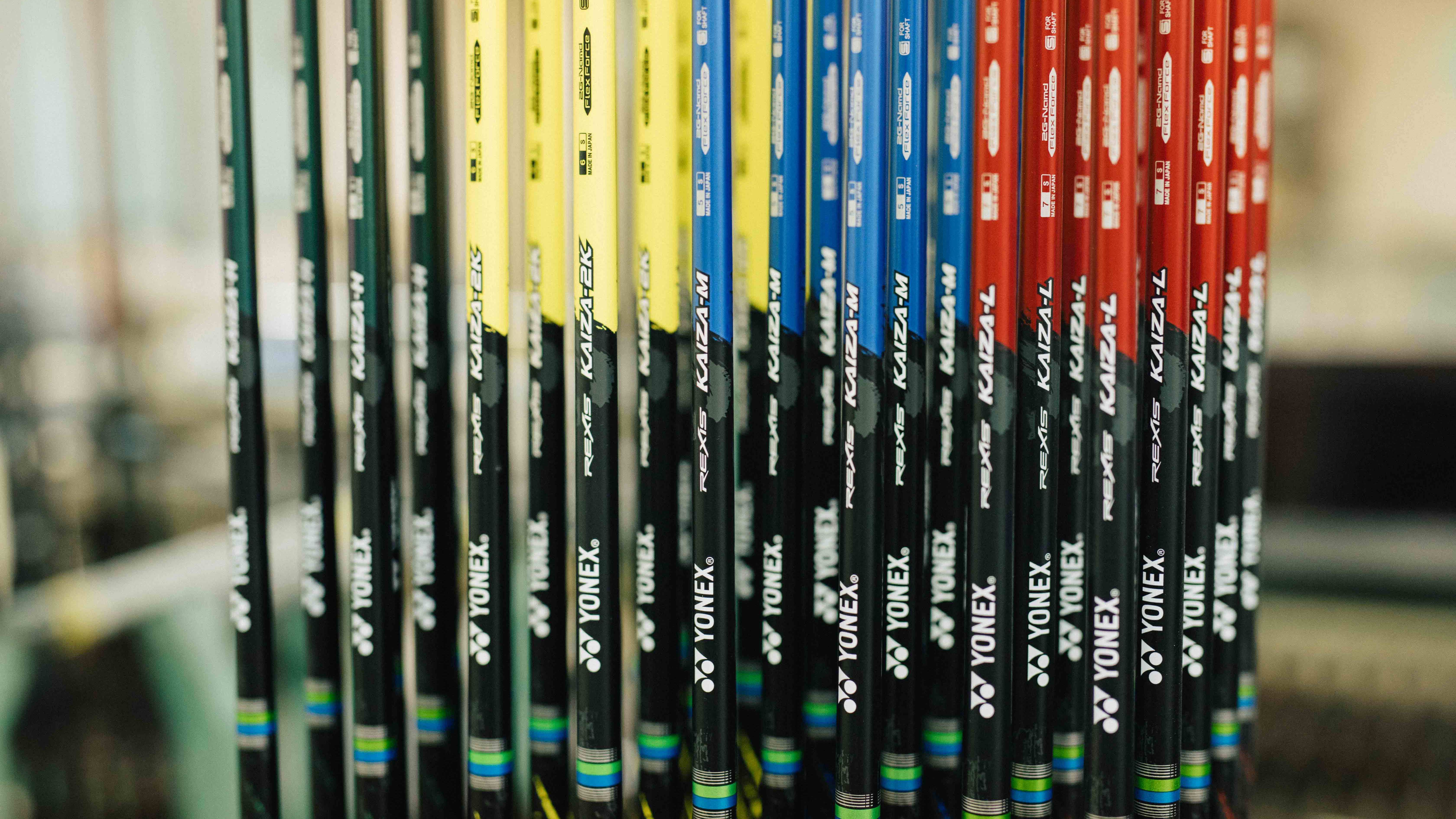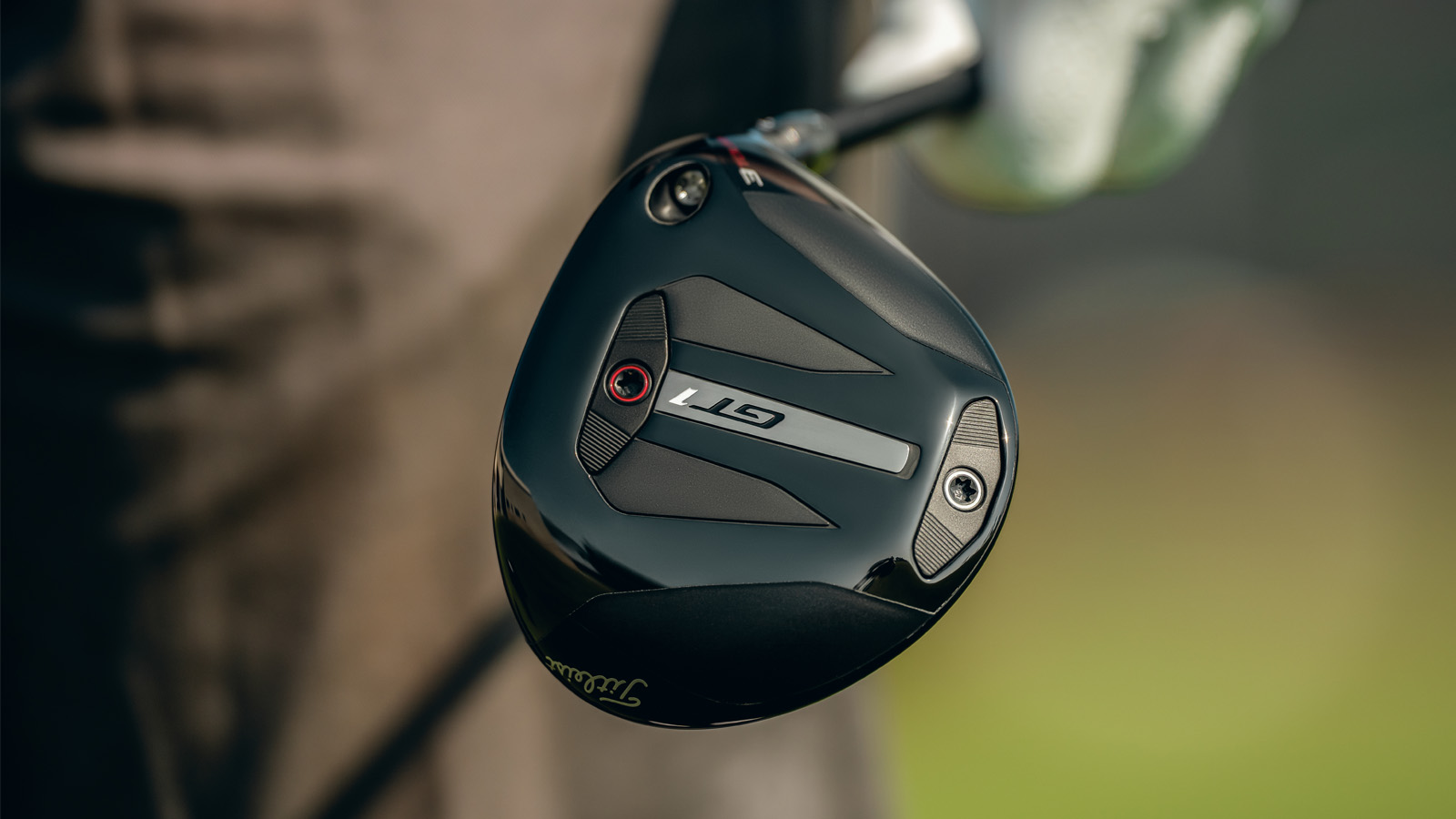5 Common Misconceptions About Graphite Golf Shafts
Equipment expert Joe Ferguson takes a look at some of the myths still surrounding graphite golf shafts...


Graphite golf shafts have been a topic of discussion among golfers for years. While they have gained popularity in recent years due to their performance benefits, there are still several myths surrounding them. Let's take a closer look at five common misconceptions about graphite golf shafts and see if we can set the record straight.
Myth 1: Graphite Shafts are Only for Beginners and Seniors

Yonex golf clubs and shafts are trusted at every level of the game, including on the LPGA Tour by Hyo Joo Kim.
One of the most pervasive myths is that graphite shafts are only suitable for beginners, seniors, or those with slower swing speeds. While it’s true that graphite shafts are often recommended for these player groups due to their lighter weight and ability to increase swing speed, their use should not be limited to these players. In fact, almost every single one of the world's best professional players - both male and female - use graphite shafts in their drivers and fairway woods nowadays, and an ever-growing number of the world's best male players are actually using them in their irons.
Players such as Matt Kuchar, Brandt Snedeker, and Fred Couples have been using graphite shafts in their irons for a number of years, and more recently South African Louis Oosthuizen has been spotted with graphite shafts fitted in his Ping Blueprint T irons.
Graphite shafts now come in a variety of flexes, weights, and torque ratings, making them versatile enough to fit players of all skill levels. Advanced players who seek a specific feel or performance characteristic can likely find a graphite shaft that meets their needs nowadays, just as they would with steel shafts.

Yonex is always incorporating the best new materials into its graphite shafts to maximise performance and create shafts to suit all player types.
Myth 2: Graphite Shafts are Less Durable Than Steel Shafts
Another common myth is that graphite shafts are less durable than their steel counterparts. While it’s true that graphite shafts can be more susceptible to damage if mistreated, modern graphite shafts are engineered to be incredibly strong and resilient. The advancements in materials and manufacturing processes have resulted in graphite shafts that can withstand the rigors of regular play equally as well as steel shafts.
The belief that graphite shafts are fragile often stems from earlier generations of shafts, which were not as robust as today’s options and were more susceptible to breakages either during play or in transit. However, with proper care and maintenance, a graphite shaft will last just as long as a steel shaft, making durability less of a concern for modern golfers.

Every graphite product in the Yonex factory goes through rigorous frequency control measurement, inspected with the club head to make an accurate result - like on the new Ezone GT driver.
Myth 3: Graphite Shafts Sacrifice Accuracy for Distance
Some golfers believe that opting for a graphite shaft will potentially improve their distance output but at the expense of accuracy. This myth seems to be rooted in the idea that the lighter weight of graphite shafts leads to less control over the clubhead. However, once again this is not necessarily the case, and a good custom fitter will match the correct profile with the correct total weight, and swing weight for a client to provide optimal performance.
Subscribe to the Golf Monthly newsletter to stay up to date with all the latest tour news, equipment news, reviews, head-to-heads and buyer’s guides from our team of experienced experts.
Graphite shafts can now be engineered with varying degrees of stiffness and torque to perfectly match a player’s swing characteristics and delivery patterns, which means they can absolutely stack up against even the best steel shafts for accuracy.
In fact, a comparative flex graphite shaft can provide the same if not higher level of control and dispersion as a steel shaft while also benefiting from a lighter weight profile that makes it easier to swing. Additionally, advancements in technology have allowed manufacturers to fine-tune the properties of graphite shafts with higher-modulus materials strategically placed to suit the needs of both distance-seeking and accuracy-focused players.

During assembly, Yonex makes sure that the spine of its graphite shafts are in the direction in which you would hit the ball for optimal performance.
Myth 4: Graphite Shafts aren’t worth the extra money
Cost is often cited as a reason why some golfers avoid graphite shafts. The perception is that graphite shafts are more expensive than steel, making them less accessible to the average golfer. While it’s true that some high-end graphite shafts can be pricey, the overall price gap between graphite and steel shafts has narrowed significantly in recent years.
Moreover, the cost of a shaft should be considered in the context of its performance benefits. For golfers who gain more distance, accuracy, or consistency with a graphite shaft, the investment may be well worth it. Additionally, there are many affordable graphite shaft options on the market that provide excellent performance without breaking the bank.

The Nanometric DR in Yonex's Rexis Kaiza shaft combines the strongest resin with the strongest carbon fiber for effortless speed.
Myth 5: Graphite Shafts Feel Too "Soft" or "Whippy"
Some golfers shy away from graphite shafts because they believe the shafts feel too soft or “whippy,” particularly compared to steel. This perception may have been true in the early days of graphite shaft development when there were fewer options available. However, modern graphite shafts are available in a wide range of flexes and frequencies, from extra stiff to senior, allowing even the fastest swinging players to find something stable enough for their speed. In fact, some of the stiffest and most stable shafts on the market today in both the driver, fairway, and iron categories are graphite composition. Due to the nature of graphite shaft construction, there is actually more opportunity to add material and mass to certain areas of the shaft to provide ultimate stability.
A “whippy” feeling often results from using a shaft with the wrong flex or profile for a golfer’s swing speed. A properly fitted graphite shaft should feel just as solid and responsive as a steel shaft, offering the desired balance of power and control.
Graphite golf shafts have evolved significantly over the years, and many of the myths surrounding them are outdated or simply untrue. Whether you're a beginner or an experienced player, graphite shafts offer a wide range of benefits, both performance and feel-related. By understanding and debunking these common myths, golfers can make more informed decisions about their equipment and potentially improve their game.

Joe has worked in the golf industry for nearly 20 years in a variety of roles. After a successful amateur career being involved in England squads at every age group, Joe completed his PGA degree qualification in 2014 as one of the top ten graduates in his training year and subsequently went on to become Head PGA Professional at Ryder Cup venue The Celtic Manor Resort. Equipment has always been a huge passion of Joe’s, and during his time at Celtic Manor, he headed up the National Fitting Centres for both Titleist and Taylormade. He’s excited to bring his knowledge of hardware to Golf Monthly in the form of equipment reviews and buying advice.
Joe lives in North Devon and still plays sporadically on the PGA West region circuit. His best round in recent years came earlier in 2023 where he managed a 9 under par 63 at Trevose GC in a Devon & Cornwall PGA Tournament.
Joe's current What's In The Bag?
Driver: Switch between TaylorMade Qi35 and Callaway Elyte TD - both with Fujikura Ventus Black 6-X
Fairway wood 1: TaylorMade BRNR Copper Mini Driver - Fujikura Ventus Black 7-X
Fairway wood 2: Callaway Apex UW 17˚- Fujikura Ventus Black 9-X
Irons: TaylorMade P7CB 3-PW with Dynamic Gold Tour Issue X100 shafts
Wedges: Callaway Opus 50, 54, and 60 degrees - Project X LS 6.0 shafts
Putter: LAB Golf Oz.1 (zero shaft lean)
Ball: TaylorMade 2024 TP5x
Grips: Golf Pride Tour Velvet 60R
Bag: Vessel Player IV Pro DXR Stand
-
 West Essex Golf Club Fire: 60 Firefighters 'Making Good Progress' Tackling Huge Clubhouse Blaze
West Essex Golf Club Fire: 60 Firefighters 'Making Good Progress' Tackling Huge Clubhouse BlazeA fire broke out at West Essex Golf Club in Chingford on Monday and the two-storey clubhouse was badly affected, with smoke seen for miles around
-
 5 Gear Changes That Could Help You Break 80 In 2026
5 Gear Changes That Could Help You Break 80 In 2026You’re so, so close. Could one of these equipment changes finally help you to achieve your goal…
-
 ‘I’ve Never Seen Anything Like It’ - Putters May Never Be The Same Again
‘I’ve Never Seen Anything Like It’ - Putters May Never Be The Same AgainWe take a look at an exciting and innovative new putter design from Sausage Golf - the Boudin Noir...
-
 Is The Blade Putter Dying Out On Tour?
Is The Blade Putter Dying Out On Tour?Gear tester and PGA Professional Joe Ferguson has noticed an interesting equipment trend in the professional game…
-
 The One Piece of Equipment (Almost) Every Tour Pro Agrees On...
The One Piece of Equipment (Almost) Every Tour Pro Agrees On...We explore the remarkable dominance of one particular brand at the flagship event on the DP World Tour
-
 I’ve Interviewed Over 20 Tour Players About Their Equipment In The Past Year. Here Is What I Have Learned...
I’ve Interviewed Over 20 Tour Players About Their Equipment In The Past Year. Here Is What I Have Learned...PGA Professional Joe Ferguson has produced 'What's In The Bag' videos with some of the best players in the game, and there are some observations to be made...
-
 How Often Should You Change Your Grips?
How Often Should You Change Your Grips?We all know we can change and should change our grips, but how often should we be thinking about it?
-
 A Forgiving Fairway Wood Built For The Tour? Titleist Surprised Us All With This New Club
A Forgiving Fairway Wood Built For The Tour? Titleist Surprised Us All With This New ClubThe Titleist GT1 3Tour fairway wood is the brand's latest release, but what’s the story behind the design and which golfers is it likely to suit?
-
 Revealed: The Equipment Pro Golfers Use That Amateurs Can't Get Their Hands On
Revealed: The Equipment Pro Golfers Use That Amateurs Can't Get Their Hands OnAre we playing the same equipment as the professionals we watch week in, week out? Possibly not. Let's see what we might be missing...
-
 Why The Callaway Opus SP Wedges Could Take Your Short Game To New Heights
Why The Callaway Opus SP Wedges Could Take Your Short Game To New HeightsWe take a look at the design and features of the new Callaway Opus SP wedges